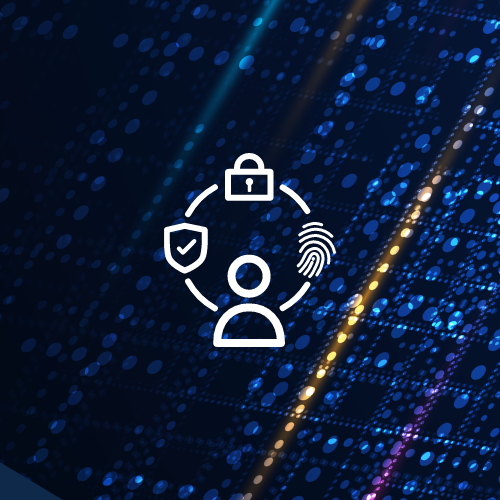What is a Zero-Trust approach to security?
One of cybersecurity’s most used new buzzwords, zero-trust is an IT model requiring strict identity verification for each person or device trying to access the network, regardless of whether they are within the network perimeter. These networks follow the core principle “never trust, always verify,” and are designed to protect modern environments with strong authentication methods such as leveraging network segmentation and simplifying “least access” policies.
It is difficult to obtain access from outside the network in traditional IT network security, but everyone inside is trusted by default. This implicit trust means that once on the network, users — including threat actors and malicious insiders — are free to access, edit, and delete sensitive data.
Zero-trust security policies are written such that no one is trusted by default from inside or outside the network, and verification is required by all to gain access to network resources. With an increasingly remote workforce and accelerated migration to SaaS applications and the cloud, taking a zero-trust approach is critical to continued data security. If done correctly, these policies should not only deliver enhanced security but also reduce complexity and associated costs.
Principles of a zero-trust security network
Monitoring and credential validation
As the network now assumes malicious actors may come from both within and outside its perimeter, it will verify user identity and privileges as well as device identity and security. Connection to the network will time out periodically once established — this makes users and devices reverify their identity if they wish to continue to use the network.
Least privilege access
An ideal zero-trust network will provide users only as much access as they specifically need. This minimizes each user’s exposure to sensitive parts of the network. Implementing least privilege involves careful managing of user permissions. VPNs may negate the benefits of least privilege access as they provide users with access to the entire network.
Device access control
Zero-trust systems monitor the many different devices accessing their network to ensure that every device is authorized. The system also assesses each to ensure they have not been compromised, further minimizing the attack surface of the network.
Microsegmentation
Microsegmentation breaks up security perimeters into small zones for varying parts of the network. This enables IT to maintain separate access requirements for each. For example, a data center may contain many separate zones and a credentialed user with access to one of these will not be able to access others without new, specific authorizations.
Limitations on lateral movement
“Lateral movement” refers to the capability to move within the network, accessing different sections and data after receiving initial access. Zero-trust prevents lateral movement as access is segmented and has to be re-established periodically. A malicious actor gaining access to one segment will not be able to move to others and can be quarantined once their account or device has been detected.
Multi-factor authentication (MFA)
With MFA, users are required to provide more than one piece of evidence to authenticate themselves. In addition to entering a password, users must provide a code sent to another device to ensure they are who they claim to be. MFA is undoubtedly one of the most efficient ways to improve access security and is rapidly becoming a standard offering across most enterprises. MFA does not mean that you can do away with having strong passwords but delivers peace of mind and freedom from having to remember all your passwords.
Implementing zero-trust security policies
The first step toward implementing a strong zero-trust security policy is the identification of the network’s most important data, assets, applications, and services. This helps prioritize what to protect with stricter policies. The next step is understanding who your users are, which applications they are using, and how they access the network to determine and enforce policies that ensure secure and limited access to critical assets. Remember, “least-access” policies mean access should be provided to specific users on an as-needed basis.
Key takeaways
Today’s cloud environments are attractive targets for cybercriminals aiming to steal, destroy, or hold your sensitive data for ransom. While no security strategy is perfect, zero-trust is among today’s most effective strategies by limiting user access and requiring enhanced authentication. Zero-trust reduces the organization’s “attack surface” and helps to mitigate the cost and impact of a breach or cyber attack. In addition, increased visibility and security across sprawling, often siloed data makes life much easier for IT. Simply put, zero-trust security enables the following:
- Reduced business and organization risk
- Increased control over cloud and containerized environments
- Reduced risk of data loss/breach
- Enhanced compliance and sensitive data governance
Next steps
As today’s cyber threats continue to grow and evolve, legacy solutions fail to protect backup data from encryption and deletion, are difficult to maintain, and offer limited response and recovery options. These solutions are also ill-equipped to handle quick recovery across workloads spanning endpoints, data centers, SaaS applications, and the cloud.
Organizations need strong security policies like zero-trust, a sound data protection strategy, and a leading data resilience vendor to implement and manage critical data. Druva ensures backup data is safe, helps operationalize security across backup and primary environments, and accelerates the recovery process to negate the effects of a breach within minutes.
Visit the security and trust page of the Druva site to learn more about the key security features of our leading platform. Explore Druva’s ransomware recovery page and watch our cyber resilience summit sessions on-demand for data protection best practices in the age of ransomware.


